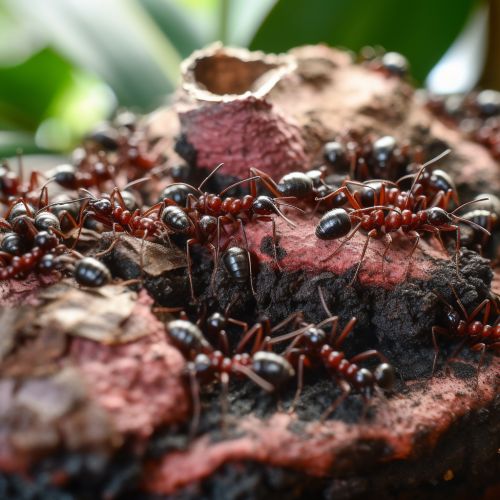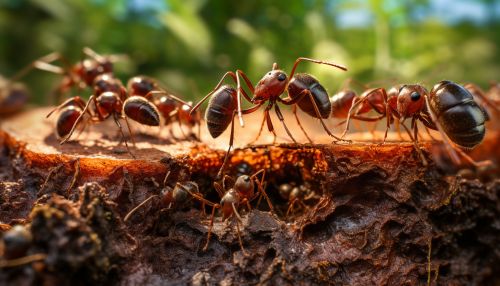Social insects
Introduction
Social insects are those insects that live in colonies and have a division of labour among various types of individuals, or castes. These insects are characterized by cooperative brood care, overlapping generations within a colony, and a division of labour into reproductive and non-reproductive groups. The most familiar examples of social insects are ants, bees, wasps, and termites. However, other insects, such as certain beetles, aphids, thrips, and cockroaches, also exhibit social behaviour.


Evolution of Sociality in Insects
The evolution of sociality in insects is a fascinating and complex process. It is believed to have evolved independently multiple times, with the most primitive forms of sociality appearing in the Late Cretaceous. The evolution of sociality is often associated with the development of eusociality, the highest level of organization of sociality, which is characterized by cooperative brood care, overlapping generations, and a division of labour.
Characteristics of Social Insects
Social insects exhibit a range of characteristics that set them apart from solitary insects. These include:
- Division of Labour: In social insect colonies, different individuals perform different tasks. This division of labour is often based on age, size, or morphology. For example, in a honey bee colony, the queen is responsible for reproduction, while the workers collect food, care for the young, and defend the colony.
- Cooperative Brood Care: Social insects care for their young cooperatively. This means that individuals other than the parents, usually sterile workers, help in raising the offspring.
- Overlapping Generations: In social insect colonies, multiple generations live together. This means that the parents and offspring coexist, often working together for the benefit of the colony.
- Communication: Social insects have complex communication systems. They use a variety of signals, including chemical signals (pheromones), tactile signals, and in some cases, visual and auditory signals, to communicate with each other.
Types of Social Insects
There are several types of social insects, each with their unique characteristics and behaviours.
- Ants: Ants are perhaps the most well-known social insects. They live in colonies that can range in size from a few dozen to millions of individuals. Ant colonies are highly structured, with a clear division of labour among workers, soldiers, and the queen.
- Bees: Bees are also highly social insects. They live in colonies consisting of a single queen, a few hundred drones (males), and thousands of workers (sterile females). The workers perform various tasks, including foraging for food, caring for the young, and defending the colony.
- Wasps: Many wasp species are social, living in colonies that can range in size from a few individuals to thousands. Like bees, wasp colonies consist of a queen, drones, and workers.
- Termites: Termites are social insects that live in large colonies, often consisting of several million individuals. They have a complex caste system, with different individuals performing different roles within the colony.
Social Organization
The social organization of insect colonies is complex and varies widely among different types of insects. However, most social insects have a caste system, with different individuals performing different roles within the colony. These roles are often determined by factors such as age, size, and morphology.
See Also


